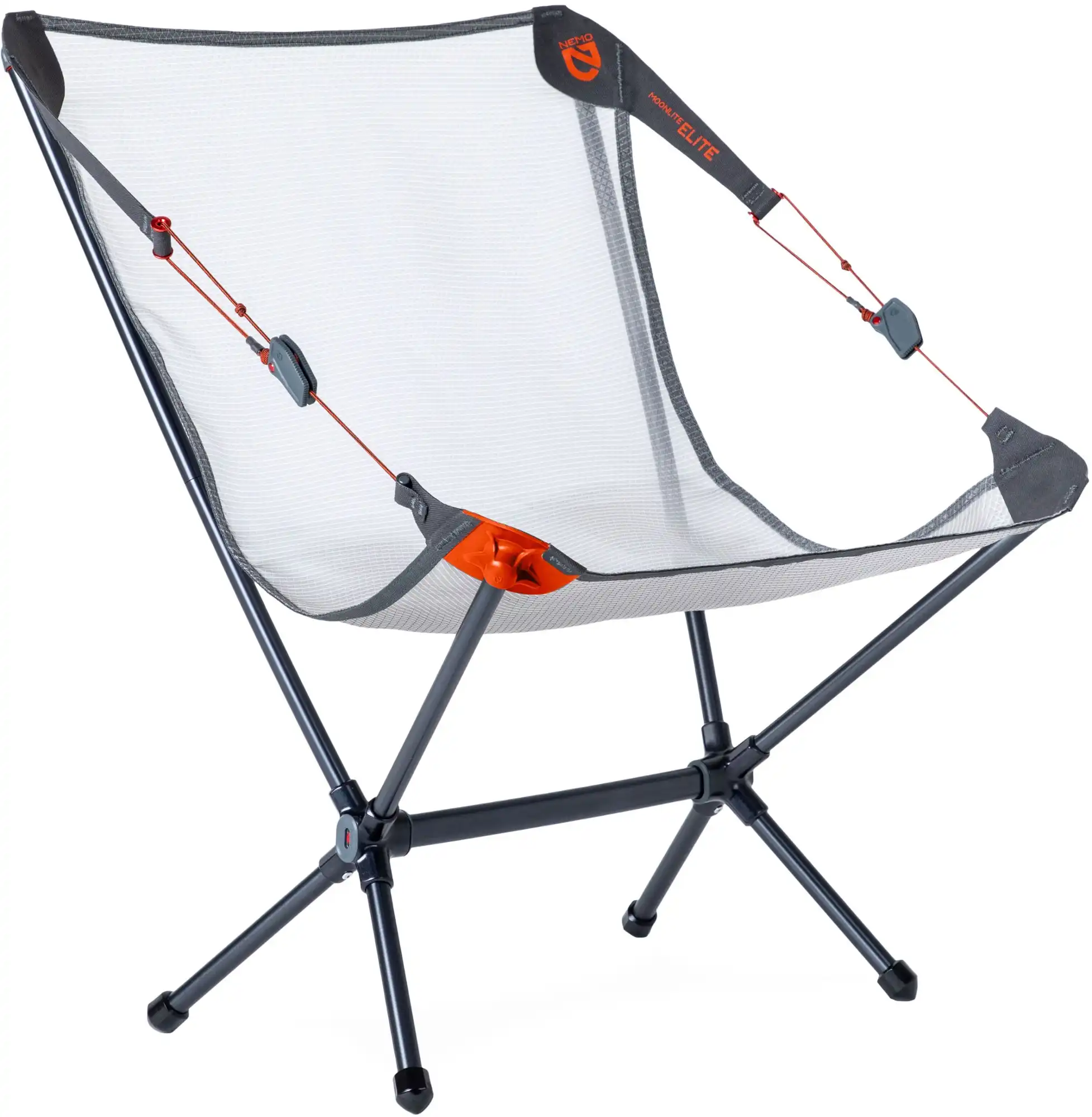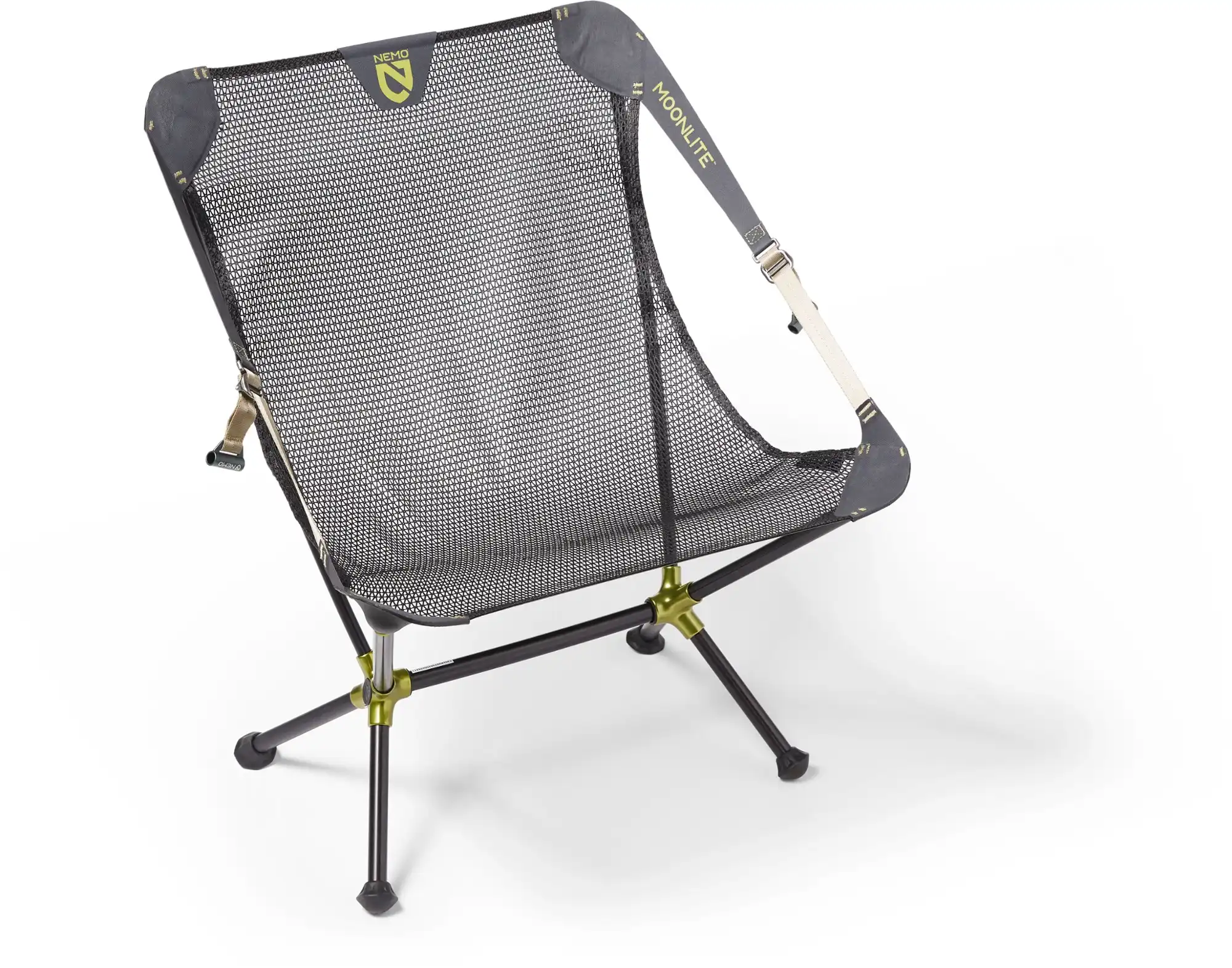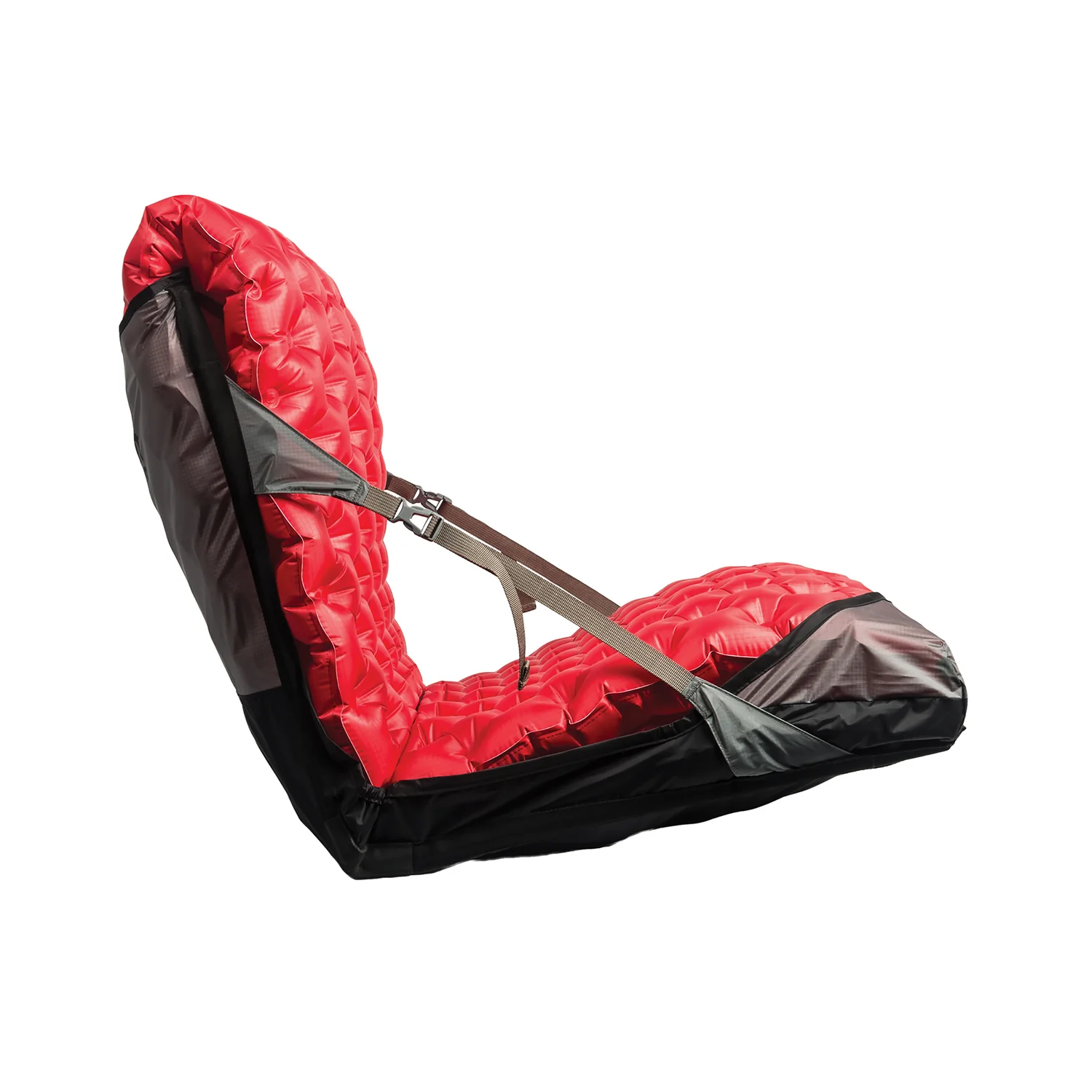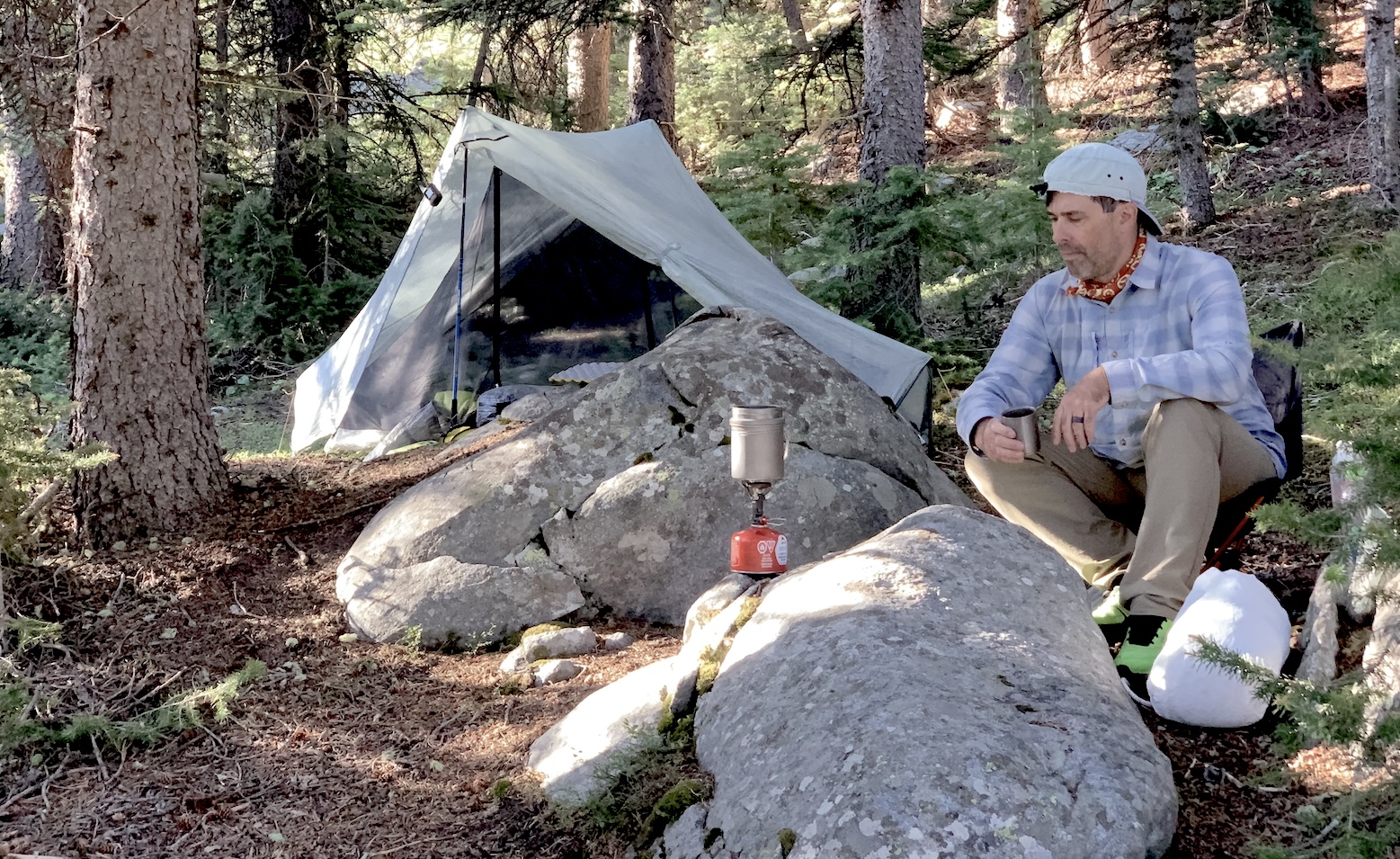Introduction
One piece of gear that accompanies me on nearly every trip in the backcountry is something that makes sitting in camp and at rest breaks more comfortable. There are pads, stools, and chairs. I use all three, depending on the circumstances.
I take a chair because the rest of my gear is light, and it gives me room to add back a few luxury items. I no longer consider a place to sit a luxury item. My aging body wins the argument with my postal scale every time.
For day hiking, I take a stool because it’s fast and easy and more comfortable than a sit pad. For long-distance treks where I’m counting ounces, the sit pad wins. And on backpacking trips with fewer miles and shorter days where I don’t mind carrying the extra weight, a chair wins out.
This is what I use:
|
WEIGHT:
17 oz (480 g)
|
WEIGHT:
11 oz (310 g)
|
WEIGHT:
1 oz (28 g)
|
|
WHAT'S UNIQUE:
|
WHAT'S UNIQUE:
|
WHAT'S UNIQUE:
|
|
MAIN ISSUES:
|
MAIN ISSUES:
|
MAIN ISSUES:
|
|
|
|
- comfortable & supportive for reclining
- high ground clearance
- requires 60 seconds of assembly to use
- packability
- speed of deployment
- not for reclining
- ultralight
- compact
- not exactly the lap of luxury

Updates
August 2024: New chairs were added to the list in the “Chair Options for Backpacking Section” to represent more design types. Specs are updated for all products. Additional context is provided (next section) to broaden the discussion of the market category. Huge thanks to Backpacking Light Members for their ongoing suggestions about the chair market – I’ve incorporated much of your feedback in this revision!
Context
I don’t need a new chair every year. There’s absolutely nothing wrong with the chair I purchased five years ago. It’s still functional, it’s still the lightest chair available, it’s still the most comfortable chair (for me), and I think I’m going to get a few more years of use out of it before the fabric rips out.
But that doesn’t mean I don’t continue to evaluate the market for something better.
As a publisher of information about backpacking gear, battling shiny object syndrome takes an enormous amount of energy and restraint. The outcomes of following trendy recommendations from PR firms and influencers include overstuffed gear closets (rooms, sheds, storage units?) and over-extended credit card balances.
I received an interesting question via email from someone who was being very careful about the current seasonal sales offered by many retailers right now:
“What gear have you carried consistently in your pack for the past five years that you’d buy again today?”
I love this question because it speaks to my desire to live a more sustainable lifestyle where I’m not buying the latest and greatest model in the same product category every year. I have to admit that my philosophy for gear buying has shifted somewhat through the years, prioritizing gear that is a little more durable and a little more versatile.
After reviewing my past gear lists, and then closing my eyes and visualizing the memories of the things that give me the most joy on long backpacking trips, near the top of the list is the camp chair.
Whoever said “sitting is the new smoking” never gained the appreciation for a comfortable place to sit at the end of a long day of hiking.
I reviewed the two most popular chairs about five years ago, and discussed “seat engineering” a bit to pick the one that I liked the best and found to be the most comfortable.

Since that time, a dozen new “ultralight” chairs have hit the market, including offerings from REI, Helinox, Big Agnes, Nemo, Sea to Summit, and others. And I’ve tried them all. Some are indeed a little more comfortable than the REI Flexlite Air and the Helinox Chair Zero, but none of them seem worth the additional weight (often 6 ounces or more) to me.
One exception to the “is it worth the extra weight?” question that I would consider, however, is that which is related to body weight. Some of the lightest chairs have a weight rating of less than 250 pounds. If you are near this body weight, or heavier, you may do fine in the lightest chairs, but they are likely to wobble a bit and may not fit your body well (i.e., not enough height or width). For you, weight capacity may be an additional consideration. Chairs with higher body weight capacity also weigh more.
A newer addition – this year’s Hot New Chair – the Nemo Moonlight Elite (18 oz / 510 g) is a serious contender – and it reclines. It’s also available in a heavier (“non-elite”) model with a much cheaper price tag.
However, the Nemo Moonlight Elite Chair is $180. Did you read that right? That’s not a typo.
For a couple of Benjamins, I can buy a pretty swanky chair with upholstered cushions from Target. Granted, it’s not a smoking chair per se, and it’s not light enough to take backpacking, but it’s an interesting perspective nonetheless.
The Garner Strap: An issue with any chair with legs – the feet sink into soft ground. The Garner strap is one lightweight DIY solution if you find yourself in soft and sandy environments regularly.
Some users will also find comfort in hammock-style chairs like the Dutchware Netless (4 ounces / 110 g and up, depending on the fabric and suspension options). I find myself in areas without trees as much as with them, so a hammock chair isn’t a versatile option for me.
My first backpacking chair was a sling chair made by Mountainsmith. I purchased it in 1987 at a used gear sale for $3, and it weighed about 7 ounces (198 g). Sling chairs are not as comfortable as hammock chairs but they are usable on the ground without trees. They weigh 3 to 5 ounces (85 to 142 g), do not provide butt padding, and are very compact. The modern-day version of the Mountainsmith Slingback and the Litesmith QuikBack UL are the most popular options. The Slingback is slightly heavier but uses trekking poles for support and is larger and more supportive for me than the minimalist and much more expensive QuikBack UL.
Even lighter and more compact than hammock and sling chairs – a simple adjustable strap. Suluk46 executes the concept flawlessly with the Puttuck Strap Chair (2.6 ounces / 64 g). The strap slides around your back and the front of your knees to keep your bent knees in a comfortable sitting position, requiring less abdominal and back fatigue than when not using the strap in the same position.
So, despite some new market additions, my recommendations on camp chairs haven’t changed much. I’m still carrying the REI Flexlite Air Chair because it fits my body type the best and is the most comfortable chair for me at the end of a long day.
Still our favorite - the Flexlite Air is one of the lightest, most comfortable, ultralight backpacking chairs available.
In addition, I’ve been experimenting with sleeping pad sleeve chairs like the new Sea to Summit Air Chair Kit, which weighs only 8.1 ounces (230 g) and can be used with your inflatable sleeping pad to convert into a comfy chair. This is a similar sitting concept to the iconic Crazy Creek chair style, but a bit lighter. My use case for these types of chairs is fairly limited – I like them for in-tent use during the winter months, when it’s too cold or stormy to hang outside during a blizzard.
The one chair that I’ve added to my gear closet (which I justify because it takes up so little space) is the new REI Flexlite Air Camp Stool. At 11 oz (310 g), there’s less fiddling around with poles and assembly. It doesn’t have a back, so its comfort is limited. But my oh my, it sure is nice for strapping to my little pack for coffee breaks or wildlife glassing when I’m on day hikes where I find myself sitting for extended periods of time.
DIY Options from the Backpacking Light Community
- Camp Stool (5.5 ounces / 156 g)
- Carbon-Leg Full Chair (13 oz / 369 g)
Finally, I still use ultralight foam sit pads when I’m counting grams and want an option that’s as easy to use as possible for quick breaks on the trail. Find a log or rock, whip out the pad, lay it down, and voila! As I’ve aged and (psychologically) have become more averse to ground-sitting, I still use ultralight sit pads surprisingly often. I like the Garage Grown Gear Sit Pad, which is light, cheap, and small, and has become my preferred “chair” for most day hiking when my sit breaks are short.
More comfortable than a foam sit pad is an inflatable one like the Klymit V-Seat. I’ve punctured two of them when sitting directly on the ground (they aren’t particularly abrasion-resistant), but you might consider combining with a sling chair for protection and additional butt comfort.
Finally, there’s the Rova X6, an all-carbon vaporware chair that’s more rigid than the other options discussed here but extraordinarily expensive ($340). And with a weight near 2 pounds (907 g), you’re not only draining your pocketbook; you’ve now left the realm of saving weight sensibly. Reduce material, drop the weight, and build it in a size suitable for a backpack frame pad sleeve – then call us back.
Chair Options for Backpacking
Included in the list below are some additional chair options less than two pounds that span the range from simple to luxurious, across all price points.
-

Still our favorite - the Flexlite Air is one of the lightest, most comfortable, ultralight backpacking chairs available.
See it at REI See Our ReviewWEIGHT: 16 oz (454 g) -

The most popular ultralight camp chair in the world, and one of the lightest. 7000-series aluminum shock-corded frame, Aramid ripstop nylon support fabric. 14" x 4" x 4" packed size. 25" seat height, 20" width, 18" depth. 265 lb seating capacity.
See it at REI See Our ReviewWEIGHT: 16 oz (454 g) -

When you need something that's fast to stow and put away, and more comfortable than a sit pad.
See it at REIWEIGHT: 11.5 oz (326 g) -

An adjustable reclining ultralight camp chair that's light, compact, and comfortable.
See it at REI See it at NEMOWEIGHT: 18 oz (510 g) -

A heavier, but more affordable version of the reclining Nemo Moonlight series.
See it at REI See it at NEMOWEIGHT: 30 oz (850 g) -

Packable, durable, and fast to deploy. Especially useful for sitting inside your shelter where headroom is limited and you don't want to damage your shelter floor.
See it at REIWEIGHT: 20.8 oz (590 g) -

A sit-on-ground style of chair that's lighter than a Crazy Creek chair and integrates with gear you already own - your inflatable sleeping pad.
See it at REI See it at Sea to SummitWEIGHT: 8.1 oz (230 g) -

A sit-on-ground sling-style chair that's the lightest backcountry chair option that still provides some back support.
See it at MountainsmithWEIGHT: 4.6 oz (130 g) -

Not a luxurious option, but it's affordable, compact, and quick to use on the trail.
See it at Garage Grown GearWEIGHT: 1 oz (28 g) -

More comfortable than foam, but be careful placing it directly on the ground. The fabric is reasonably durable, but still not highly resistant to puncture in response to body weight. Combine with a sling chair or Crazy Creek style folding chair for additional comfort.
See it at Hammock Gear See it at KlymitWEIGHT: 2.6 oz (74 g)

Related Content
- Gear Review: Lightweight Backpacking Chairs: REI Flexlite Air Chair vs. Helinox Chair Zero
- Trip Reports / Video: 24: Idaho (Couples Backpacking)
DISCLOSURE (Updated April 9, 2024)
- Backpacking Light does not accept compensation or donated/discounted products in exchange for product mentions or placements in editorial coverage. Some (but not all) of the links in this review may be affiliate links. If you click on one of these links and visit one of our affiliate partners (usually a retailer site), and subsequently place an order with that retailer, we receive a commission on your entire order, which varies between 3% and 15% of the purchase price. Affiliate commissions represent less than 15% of Backpacking Light's gross revenue. More than 70% of our revenue comes from Membership Fees. So if you'd really like to support our work, don't buy gear you don't need - support our consumer advocacy work and become a Member instead. Learn more about affiliate commissions, influencer marketing, and our consumer advocacy work by reading our article Stop wasting money on gear.






Home › Forums › A Place to Sit: A Perspective on Ultralight Camp Chairs